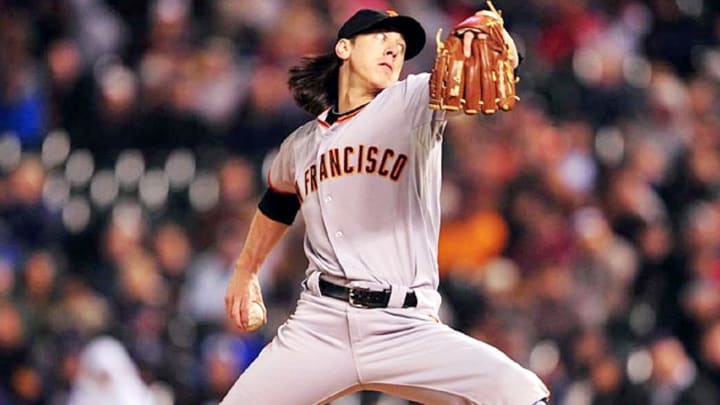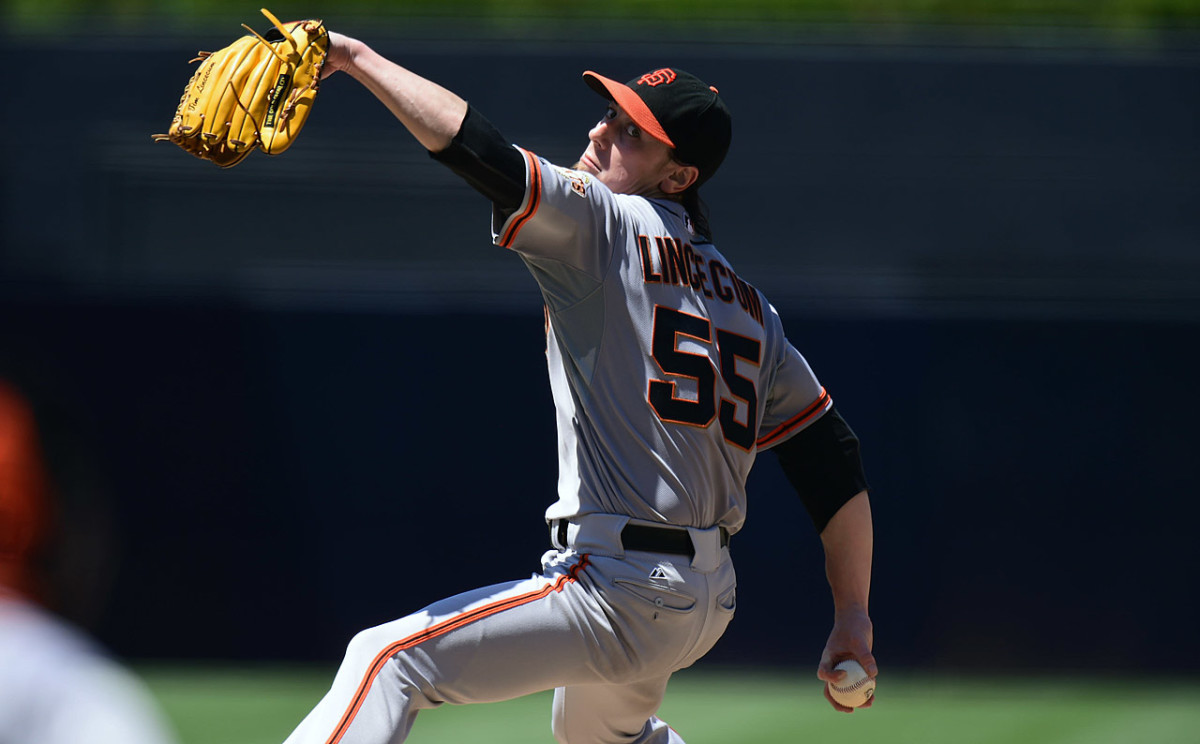Tim Lincecum’s Greatness Wasn’t Built to Last

On Aug. 5, 2016, Tim Lincecum took the mound on a big league field for what ended up being the final time of his career. That he did so wearing an unfamiliar Angels red instead of his signature San Francisco black-and-orange is a footnote best forgotten. The game—and Lincecum’s performance, in which he surrendered six runs in the first inning—was altogether an unmemorable one, the dying embers of a career that once burned brighter than anyone else’s.
Maybe it’s not all that surprising that a 5' 11" pitcher—one with a delivery so violent that former Cleveland general manager Mark Shapiro once remarked, “It looks like his head is going to snap off and his arm is going to fly off”—crashed down to Earth so suddenly after conquering the sport so quickly. No matter how abrupt the end came, the beginning was so electric, so awe-inspiring that the now-37-year-old finds himself on the Hall of Fame ballot for the first time.

There is little point in debating whether Lincecum should be voted into the Hall; it is a near certainty that he will not. Based on JAWS—a metric created by FanGraphs writer Jay Jaffe, formerly of Sports Illustrated, to measure a player’s Hall of Fame worthiness—Lincecum ranks 442nd among starting pitchers, putting him in league with guys like Kyle Hendricks and Ubaldo Jiménez. Bill James has Lincecum at 30th out of the 30 players on this year’s ballot, making it a real possibility that The Freak will be a one-and-done candidate for Cooperstown.
Though there were certainly high points during the latter half of his career—no-hitters in 2013 and ‘14, along with a third World Series title in ‘14—it’s been a decade since the baseball viewing world got to see Lincecum be great over the course of a full season. Now is as good a time as any to look back on just how great Big Time Timmy Jim was in his prime—and what kind of career his first few seasons suggested the makings of.
Despite his diminutive stature, Lincecum was by no means an out-of-nowhere star. At the University of Washington, he was twice named the Pitcher of the Year in the Pac-10, then won the Golden Spikes Award as the nation’s best amateur player in 2006. The Giants used the 10th pick in that year’s draft to take Lincecum, then gave him a $2.025 million signing bonus that was, at the time, the most the club had ever given to an amateur player.
Less than a year after he was drafted, Lincecum made his big league debut. The year after that, he won his first Cy Young Award, then another one in 2009. He made four straight All-Star teams from ‘08 to ‘11, and led the National League in strikeouts three years in a row during that span. Since 1900, only Tom Seaver has struck out more batters (1,155) over his first five seasons than Lincecum (1,127).
Lincecum is one of five pitchers to win multiple Cy Young Awards through their age-25 season, along with Roger Clemens, Clayton Kershaw, Denny McLain and Bret Saberhagen. That the latter two of those four similarly struggled in the back half of their careers speaks to the physical toll that early success can have on a pitcher—particularly one who was used so extensively so early on.
Philosophies about bullpen usage and pitch counts for young arms have evolved rapidly since Lincecum burst onto the scene. As a rookie in 2007, Lincecum threw 100 or more pitches in 13 of his 24 starts. The next year, he threw the second-most pitches (3,682) in the majors, then finished in the top 20 in that category in each of the next four seasons. While that high workload didn’t prevent him from staying on the field (he pitched at least 32 games each year from ‘08 to ‘14), his production saw a steep decline beginning in ‘12.
Sign up to get the Five-Tool Newsletter in your inbox every week during the MLB offseason.
“Ultimately, I don’t know if anybody has the right answer about why he didn’t last longer. … There’s a whole bunch of things that nobody will ever have a definitive word on,” longtime Giants athletic trainer Dave Groeschner said of Lincecum’s decline back in 2017, per Daniel Brown of The Orange County Register. “They’ll be able to say, ‘I think it was this. I think it was that.’ But nobody really knows.”
While the decline was swift and irreversible, it’s hard to overstate the elite company Lincecum pitched his way into in such a brief time. That he made it onto the ballot at all is a testament to his brilliance in just five seasons. Based on Baseball-Reference’s similarity score, his most comparable pitcher through age 27 is Stephen Strasburg. Through 29, it’s Bob Gibson.

And though his contributions to San Francisco’s World Series teams in 2012 and (in particular) ‘14 were relatively meager, he was dominant during the ‘10 playoff run. In his first postseason start he pitched a two-hit shutout and struck out 14 against the Braves in Game 1 of the ‘10 NLDS. He pitched six games (five starts) that postseason, going 4–1 with 43 strikeouts, a 2.43 ERA and a 0.92 WHIP across 37 innings, and he won each of his two World Series starts against the Rangers. He pitched in seven more playoff games, though he made only one more start. For his postseason career, he went 5–2 with a 2.40 ERA and 0.85 WHIP in 56 1/3 innings.
Whether it was injuries, too many innings or too unorthodox mechanics, Lincecum’s greatness wasn’t built to last. Perhaps that best fits the narrative—his rise was pure hyperbole, so how could it be sustained? There’s some irony that those same loud mechanics that made some dubious he’d ever be successful ultimately were the very reason he did succeed, even if they might have cost him any shot at longevity. Lincecum’s father, Chris, once wrote of his son’s pitching style: “He’ll throw forever, and maintain his velocities and the best breaking ball since Sandy Koufax and the best fastball since Gibson and [Bob] Feller.” Does it get more hyperbolic than that?
Lincecum did not, in fact, throw forever. But for a while, it felt like he could, and that’s really what he’ll be remembered for the most: For an all-too-brief time, the short, lanky pitcher who didn’t look or throw like anybody else could pitch better than everybody else. That’s a legacy that will be remembered, even if this ends up being the only time Tim Lincecum ever winds up on a Hall of Fame ballot.
More MLB Coverage:
• Solidarity and Betrayal: Inside Baseball’s First Major Labor War
• How Should We Evaluate Andruw Jones’s Hall of Fame Case?
• Where Is the Hall of Fame Love for Jeff Kent?
• Why Jimmy Rollins Belongs in the Hall of Fame
